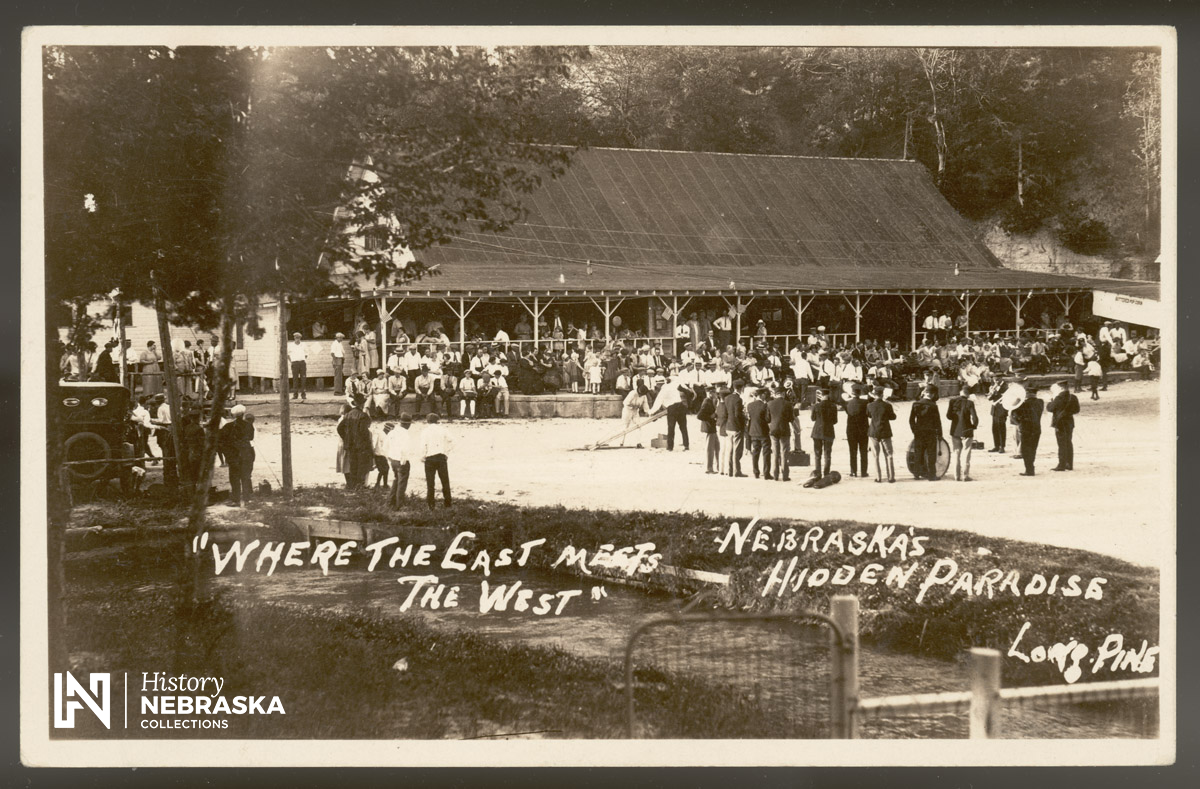Nebraskans have always looked to get the most vacation for their money. Back in the early twentieth century, one of the most popular bang for your buck vacation spots was Long Pine, Nebraska.

“Where to spend my vacation is a problem which hundreds of Omaha minds are puzzling over just now,” said the Omaha Daily News on July 18, 1909. The News told its readers, “You can have a fine vacation trip in Nebraska for $10 and get all the fishing you want, . . . . For $25 you can spend a week at Lake Okoboji, Ia., or Long Pine, Neb., all expenses included, and get all the clear water and fresh air you can use. Go to any railroad ticket office and they will give you a list of vacation trips that can be made at an expenditure of $10 to $50.”
The News suggested to sportsmen looking for a bargain:
The man who has only $10 to spend for a week’s vacation and who likes to fish, can get the most of enjoyment with the least of expense by going to Lake Quinnabaug [Quinnebaugh], near Tekamah, Neb., on the Northwestern road. The railroad fare for the round trip is only $1.68 and you can get at some farm house a week of the very best board-chicken and fish, and butter and eggs and milk-for $6. That leaves $2.32 to spend for snakebite medicine, tobacco, reading matter and other incidentals. Quinnabaug is about the size of Cut-Off lake, but is said to be a much better place for fishing, as not so many fishermen go there.
Long Pine in Brown County was also said to be a low-cost vacation destination within the state:
Here is a place right in Nebraska, which, though not known widely as a summer resort, is said by many who have been there to be as beautiful and restful a place to spend a summer’s week in as could be desired. . . . Fare for the round trip to Long Pine on the Northwestern is $10.02; meals on the train will cost about $1 and hotel expenses from $10 to $12 for six days. You leave Omaha at 7:50 in the morning and arrive at your destination at 3:55 in the afternoon, or you leave Omaha at 6:10 in the evening and arrive at midnight. The return may be made by day or night.
Long Pine was soon to grow into one of the state’s most popular vacation spots. People had long noticed the special features of Pine Creek canyon. The town’s early entrepreneurs had big ideas about capitalizing on the potentially medicinal properties of the waters of the creek, a tributary of the Niobrara River. The Omaha Bee described the creek as “remarkable,” with an average velocity of seven miles per hour, width of twenty-five feet, and depth of three feet, and promised that a visit to the site would be well repaid. The Omaha Daily Republican noted on January 5, 1882, that the beautiful creek and canyon had the makings of a “grand summer resort.”
In 1910, the year after the Daily News article on budget vacation destinations was published, three entrepreneurs formed the Long Pine Amusement Park, a health and vacation resort that would become one of the most developed and longest lasting of all amusement parks in Nebraska. The resort drew travelers, first by rail and later by automobile, to stay in cabins beside Long Pine Creek and enjoy outdoor recreation and live entertainment. The area remains a busy summer vacation spot today.
Read more about Long Pine in Rebecca A. Buller’s “Intersections of Place, Time, and Entertainment in Nebraska’s Hidden Paradise,” from the Summer 2011 issue of Nebraska History.



